| 1.
|
Rural Tasks (1502)
This woodcut depicts common rural tasks, such as mending fences, building boats, tending livestock, baking, and blacksmithing. Woodcut by unknown German artist, 1502.
|

|
| 2.
|
Satirical Depiction of a Lewd Peasant (1526)
Woodcuts were a means of replicating images in the thousands for quick and widespread distribution. The first half of the sixteenth century saw the circulation of more illustrated broadsheets than....
|
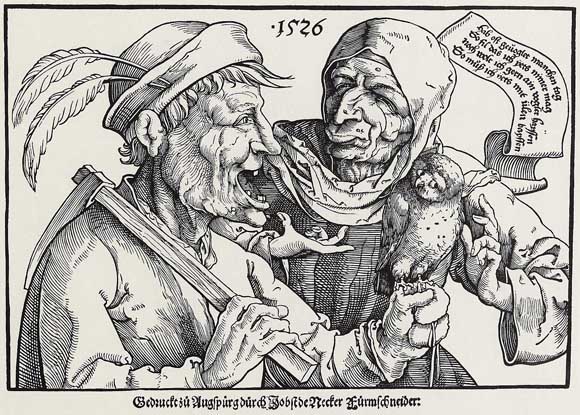
|
| 3.
|
Rural Festival, Image One of Three (1535)
A festival in an early modern village was a welcome opportunity for entertainment and socializing. This woodcut, part of a series by Nuremberg artist Hans Sebald Beham (1500-50), portrays village....
|
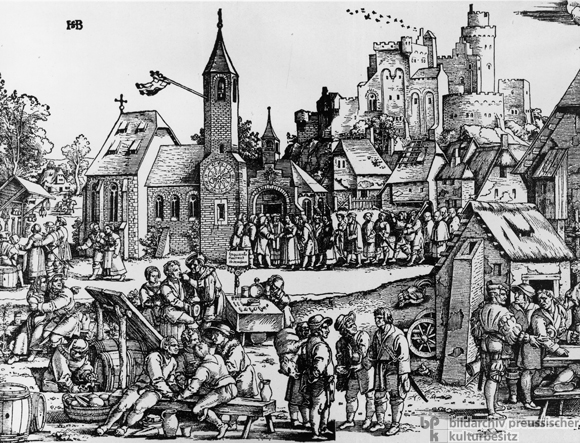
|
| 4.
|
Rural Festival, Image Two of Three (1535)
This woodcut, the second scene in a series by Hans Sebald Beham (1500-50), shows men drinking and socializing (left), lovers embracing, a drunken man vomiting next to a dog, friends at a table, and....
|

|
| 5.
|
Rural Festival, Image Three of Three (1535)
This woodcut, the third scene in series by Hans Sebald Beham (1500-50), features, among other things, a horse race (background) and a village brawl (middle-ground). Woodcut by Hans Sebald Beham,....
|
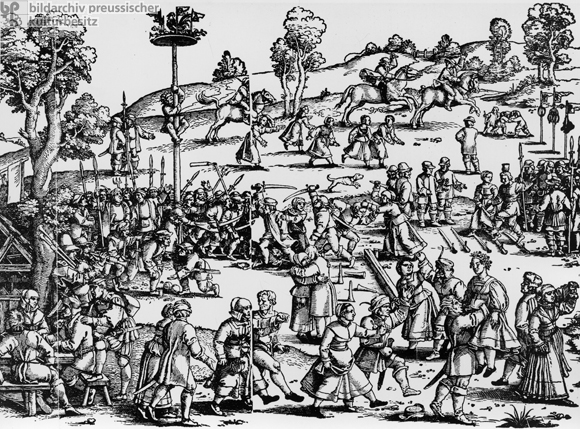
|
| 6.
|
Rural Trades – The Farmer (1568)
This image of a farmer was taken from a 1568 publication entitled Eygentliche Beschreibung Aller Stäande auf Erden [Actual Description of all Professions on Earth], with verses by
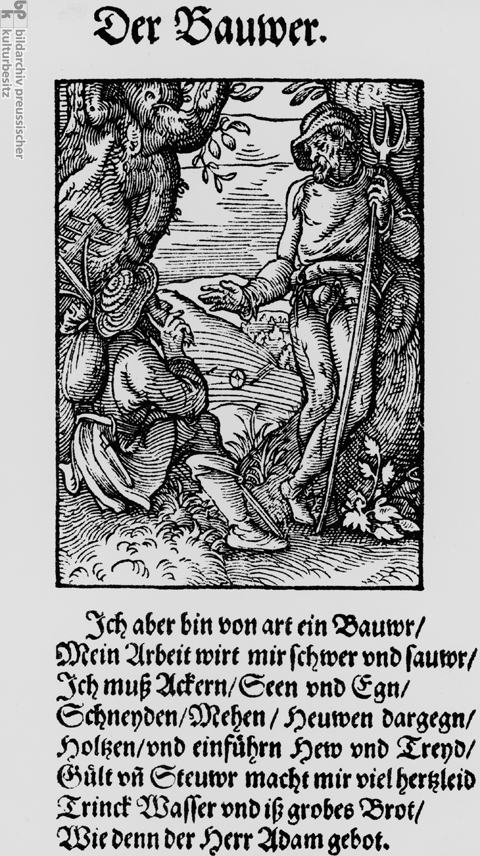
|
|
| 7.
|
The Harvest (c. 1620)
For most of the year, a gendered division of labor prevailed in the village. The house and the garden were the domain of women; field work was the preserve of men. The chief exception came at harvest....
|

|
| 8.
|
Dancing Peasants (late 16th Century)
Many of the popular illustrated broadsheets of the sixteenth century depict scenes from everyday life, such as this woodcut of a peasant dance. The verse at the bottom suggests that the first couple,....
|
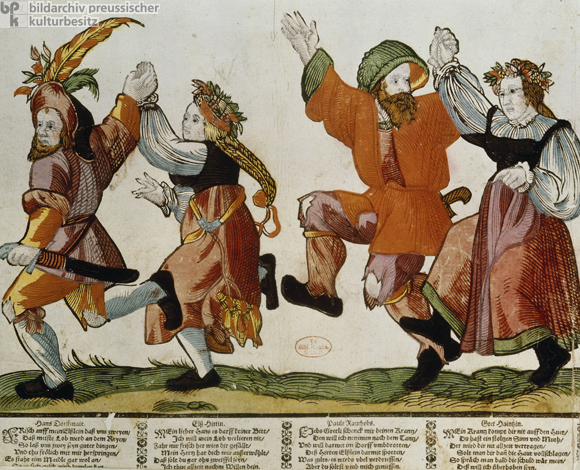
|
| 9.
|
Functional Model of the Late Medieval Village
The following diagram is a functional model of the economy of the late medieval German village. There are three zones: the village (center); arable land, which consists of meadows and fields (inner....
|
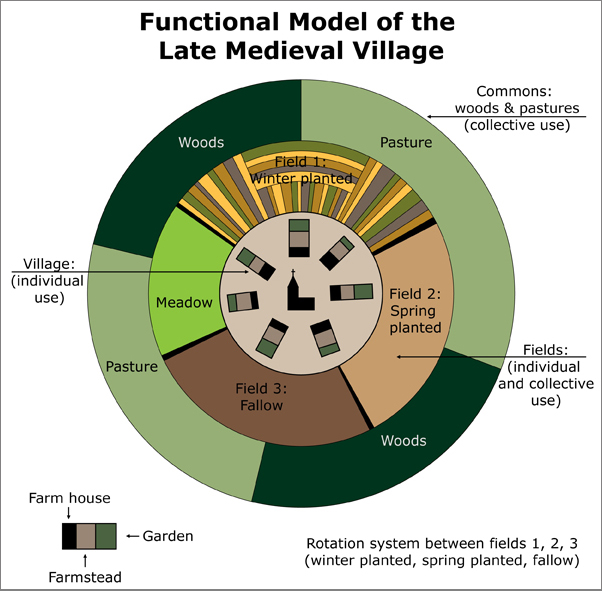
|
| 10.
|
Government of a Late Medieval Village
The following diagram is a functional model of the government of a typical late medieval village. In terms of structure, the government was a mixture of lordship and communal autonomy. That elements....
|
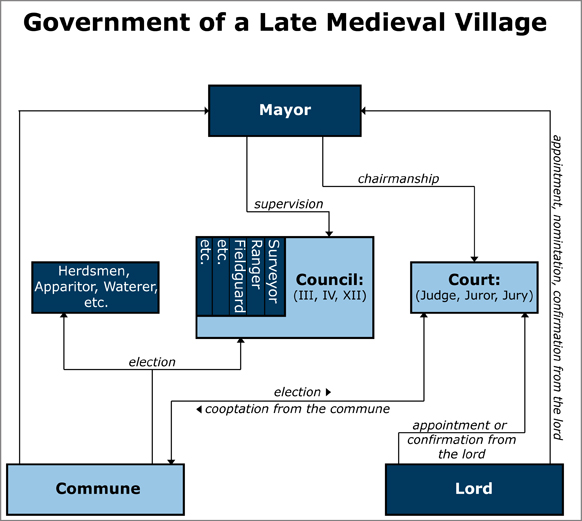
|














 return to chapter list
return to chapter list









